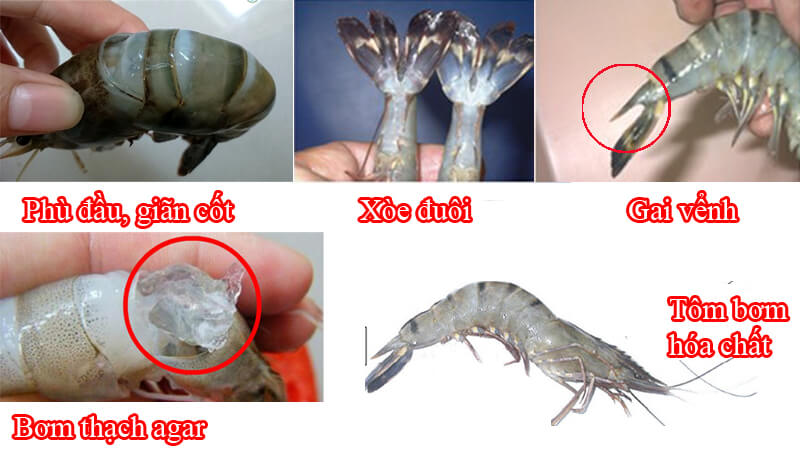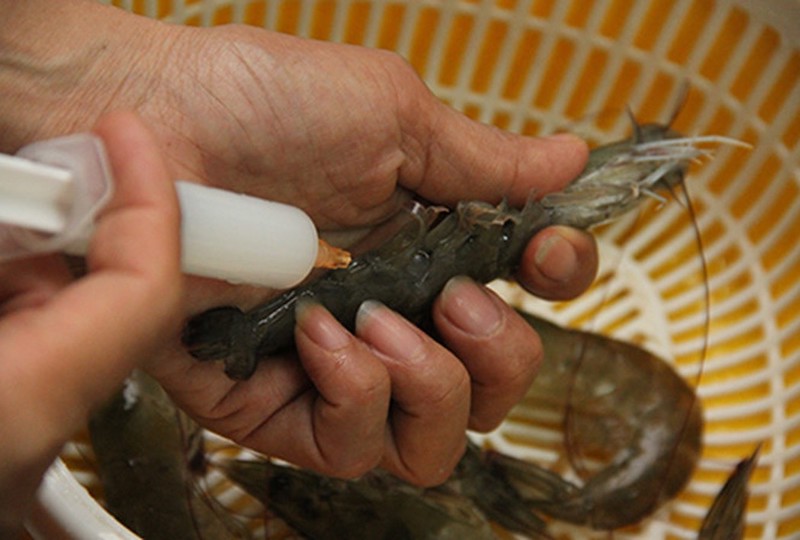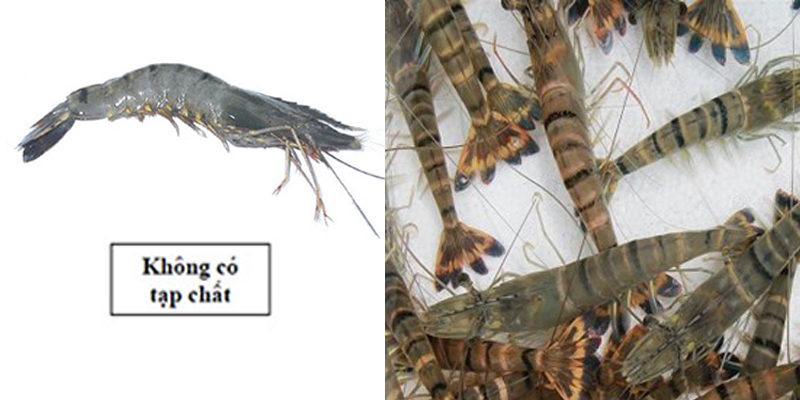Just like with fruits, shrimp is in dire need of a similar rescue due to export restrictions. Some individuals are taking advantage of this situation by injecting chemicals into the shrimp to increase their weight and, consequently, their income. This is an extremely dangerous practice as these chemicals can have a significant impact on the health of those who consume them.
Shrimp injected with chemicals, especially in liquid form, provide an ideal environment for bacterial growth. Consuming these shrimp can lead to food poisoning, digestive disorders, diarrhea, typhoid fever, and dysentery. Even more alarmingly, if shrimp are injected with urea, consumers are at risk of acute and chronic poisoning, insomnia, physical weakness, and memory loss. It is crucial to identify clean shrimp and those that have been injected with chemicals to protect both the health and economic interests of consumers.

1 How to Spot Shrimp Injected with Chemicals
– When choosing shrimp, if they appear stiff and rigid, they have likely been injected with foreign substances. Naturally, shrimp should be soft and flexible.
– Shrimp injected with fillers often look abnormally plump and bloated.
– Shrimp soaked in urea tend to absorb water, resulting in a very tense and hard shell, especially around the gills.
– The head of the shrimp feels loose and seems almost detached from the body.

– The shrimp’s spines are erect, and the shell has a pale, dull color rather than the vibrant shade typical of healthy shrimp.
– Shrimp injected with powder, chemicals, or foreign substances often have a fanned-out tail instead of the tightly closed and curved tail of normal shrimp.
– During cooking: Shrimp soaked or injected with chemicals tend to release a lot of water when cooked, resulting in a bland taste, mushy texture, and easy-to-peel shells.
– If the shrimp have been injected with agar, when cooked, you will easily notice the layer of agar between the meat and the shell, especially around the head and under the gills.
2 How to Choose Delicious and Clean Shrimp

– The top priority is to choose shrimp that are still jumping or swimming. Their legs and claws should be intact, and the shell should be shiny. The meat should be transparent and firmly attached to the shell.
– If you’re buying frozen shrimp, check their freshness by straightening their body. If the joints between the segments fit tightly, the shrimp is fresh. If the joints are loose, it has been frozen for too long.
– With black tiger shrimp, avoid those with pink shells as they are more prone to spoilage.
– When choosing shrimp he, opt for live ones with pinkish-white shells and dark green eyes.
– For iron shrimp, don’t buy those with a deep pink color, as this indicates that they are old and no longer fresh.
If you notice any abnormal signs, such as soft meat or an unusual odor, it is best to discard the shrimp to avoid the risk of food poisoning.
Shrimp are a delicious and nutritious food, but choosing the right ones is essential to ensure a safe and enjoyable dining experience. We hope that this article has provided you with valuable information on selecting clean shrimp, making your shrimp rescue mission a success!






























